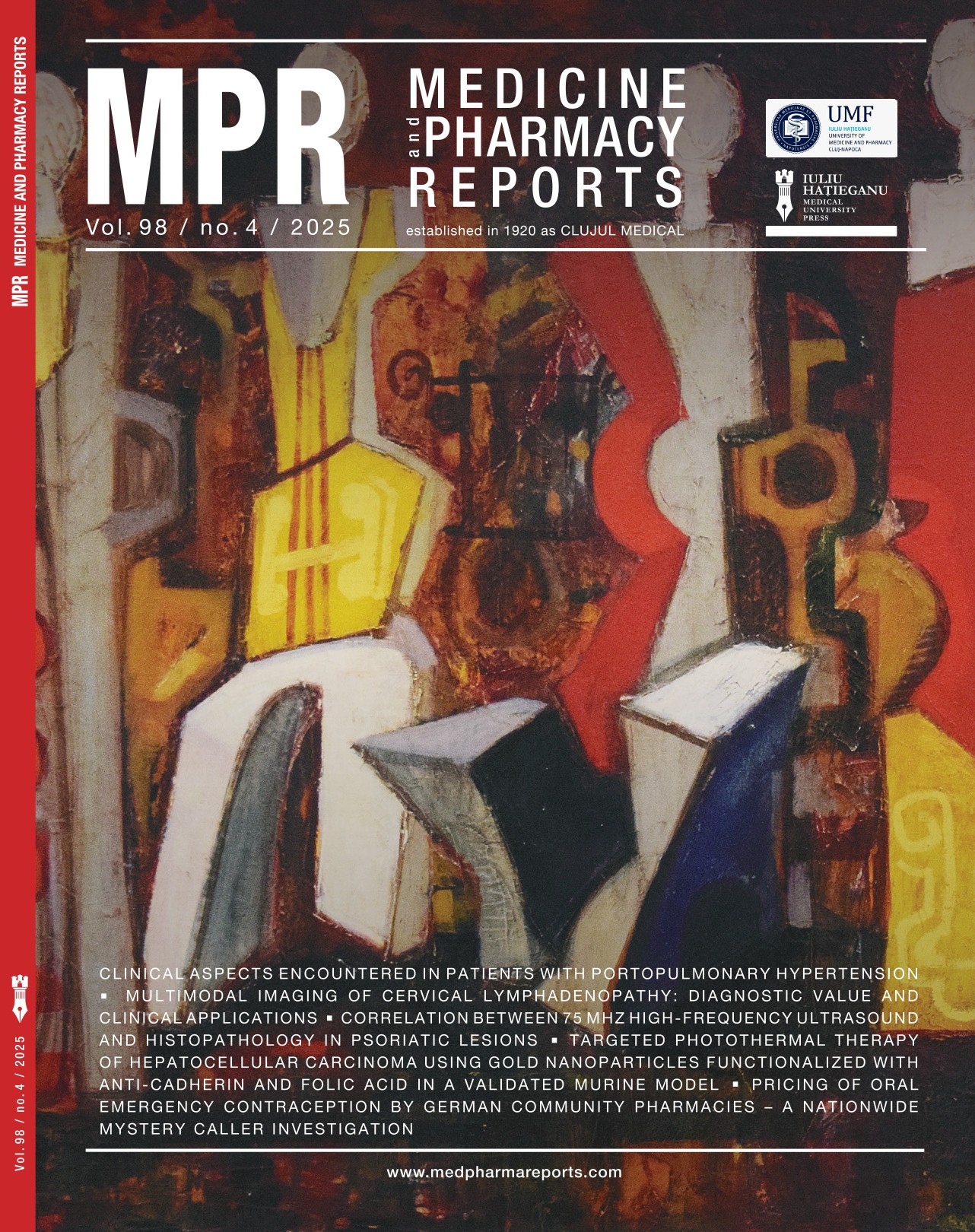The impact of physiological and parafunctional posterior occlusal forces on experimental Ti- 15Zrsupracrestal dental implant – a finite element analysis
DOI:
https://doi.org/10.15386/mpr-2930Keywords:
finite element analysis, Ti-15Zr implants, titanium implants, Roxolid, supracrestal implant, parafunctional forces, tissue-level implant, convergent collarAbstract
Aim of the study. This study aims to evaluate and compare the stress distribution patterns of two experimental tissue-level, convergent collar implants (one made of Ti- 6Al-4V (control) and the other of Roxolid-based (Ti-15Zr) material) using 3D finite element analysis (FEA) under various simulated masticatory conditions.
Methods. A 3D finite element model replicating a tissue-level implant with convergent neck design was developed in ANSYS software, incorporating both cortical and trabecular bone geometry. Implants made of Ti-6Al-4V-Grade 5 and Roxolide-type- Ti-15Zr alloy were simulated under axial (0°) and oblique (45° angle) loading forces (50 N, 200 N, 300 N, and 400 N). The von Mises equivalent stress distribution was calculated to assess the biomechanical performance.
Results. Under masticatory forces simulation, titanium-alloy implants exhibited maximum stress values (400 N) of 260.38 MPa under axial load and 536.2 MPa under oblique load. Ti-15Zr implants exhibited a slightly lower peak stress of 506.95 MPa under a load of 400 N at a 45° inclination and 240.81 N under axial load. Based on 3D finite analysis, the stress distribution maps showed higher concentration in the implant–abutment connection and the cervical region, particularly under oblique loading.
Conclusions. Although titanium implants exhibited higher stress limits, Ti-15Zr implants showed biomechanical stability under oblique simulated forces. Ti- 15Zr implants exhibited a more uniform stress distribution with a reduced peak concentration.
Downloads
Published
How to Cite
Issue
Section
License
Copyright (c) 2025 Brigitta Bokor, Adriana Objelean, Simion Bran, Radu Septimiu Campian, Cristian Vilău
The authors are required to transfer the copyright of the published paper to the journal. This is done by agreeing to sign the Copyright Assignment Form. Whenever the case, authors are also required to send permissions to reproduce material (such as illustrations) from the copyright holder.

The papers published in the journal are licensed under a Creative Commons Attribution-NonCommercial-NoDerivatives 4.0 International License.

